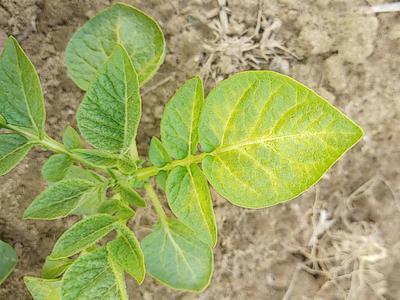Potato X Virus
PVX
Virus
In a Nutshell
- Light-green mosaic pattern on leaves.
- Mottled areas with small, brown dots.
- Coinfection with other viruses can worsen the symptoms.
Can also be found in
Symptoms
The severity of the symptoms depends on plant variety, developmental stage, virus strain and environmental conditions. Symptoms can range from inconspicuous interveinal chlorosis to severe light-green mosaic pattern with wrinkled leaves, necrotic leaf tips, stunting and death of plants. In some cases, the mottled areas have small, brown spots. Coinfection with other viruses can worsen the symptoms
Recommendations

Organic Control
Sorry, we don't know of any alternative treatment against PVX. Please get in touch with us in case you know of something that might help to fight this disease. Looking forward to hearing from you.

Chemical Control
Always consider an integrated approach with preventive measures together with biological treatments if available. Chemical treatment of viral diseases is not possible.
What caused it?
The virus mostly infects solanaceous crops such as eggplant, potato, tobacco and pepper, as well as various weeds. Transmission occurs via direct contact with an infected plant, or via contaminated tools, detrimental cultural practices, or grasshoppers (Melanoplus differentialis or Tettigonia viridissima). Symptoms seem to develop more distinctly at 16-22°C. At higher ambient temperatures, symptoms are often masked.
Preventive Measures
- Use certified virus-free seeds.
- Plant potato varieties with resistance to PVX.
- Do not plant tomatoes and potatoes next to each other.
- Inspect crops and remove any plants suspicious of being infected.
- Avoid plant injuries caused by mechanical treatment.
- Leave sufficient space between plants.
- If working with one susceptible crops after another, change clothes and wash thoroughly with soap and water.
- Disinfect equipment and tools.



